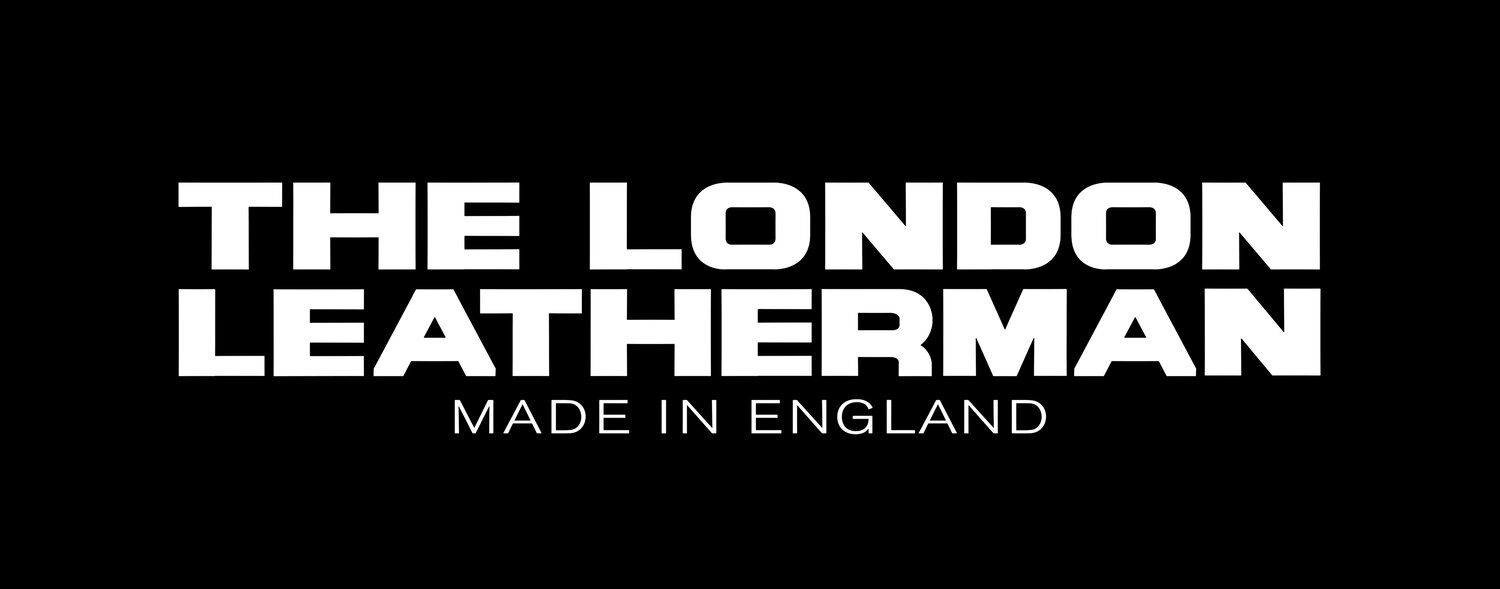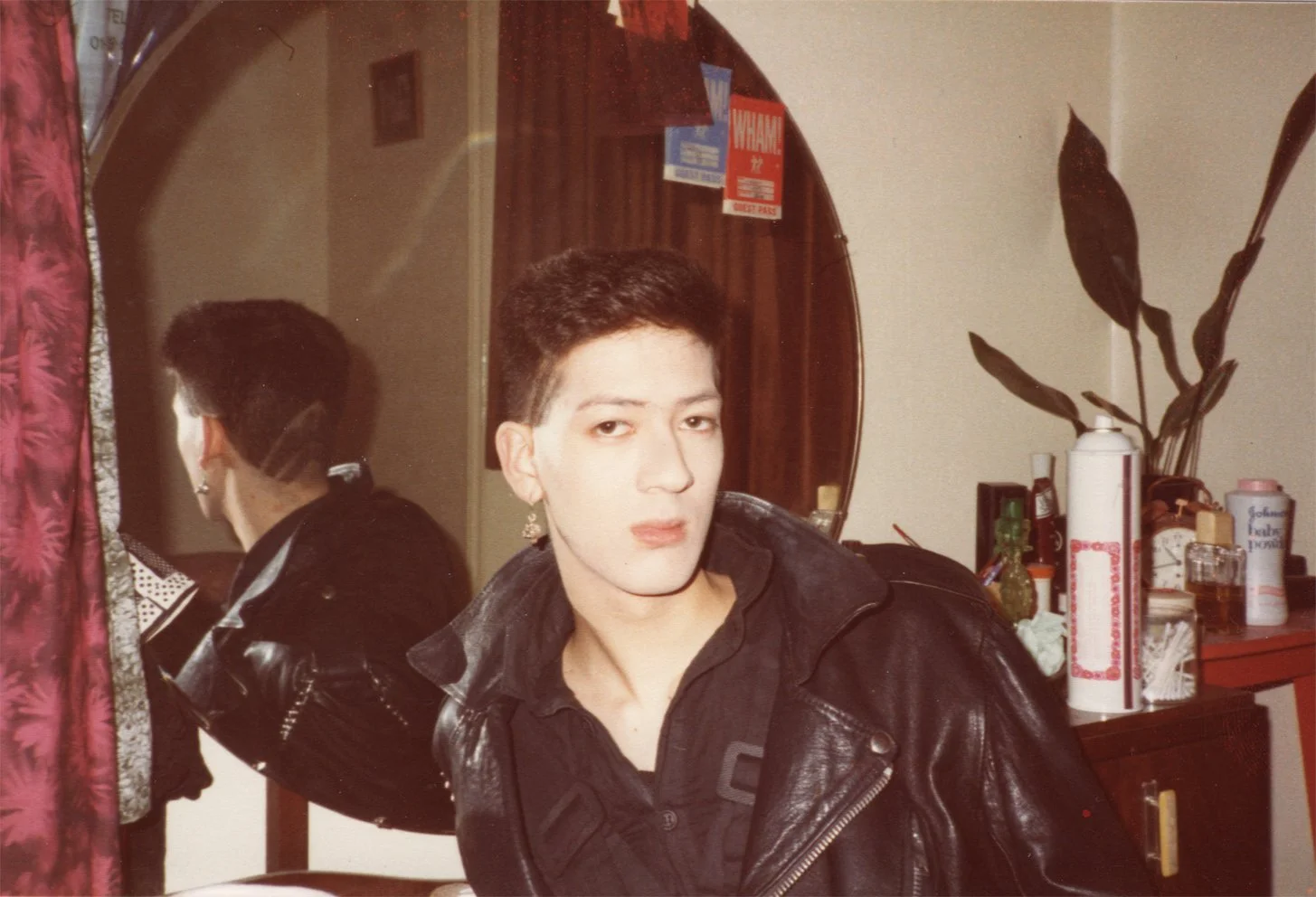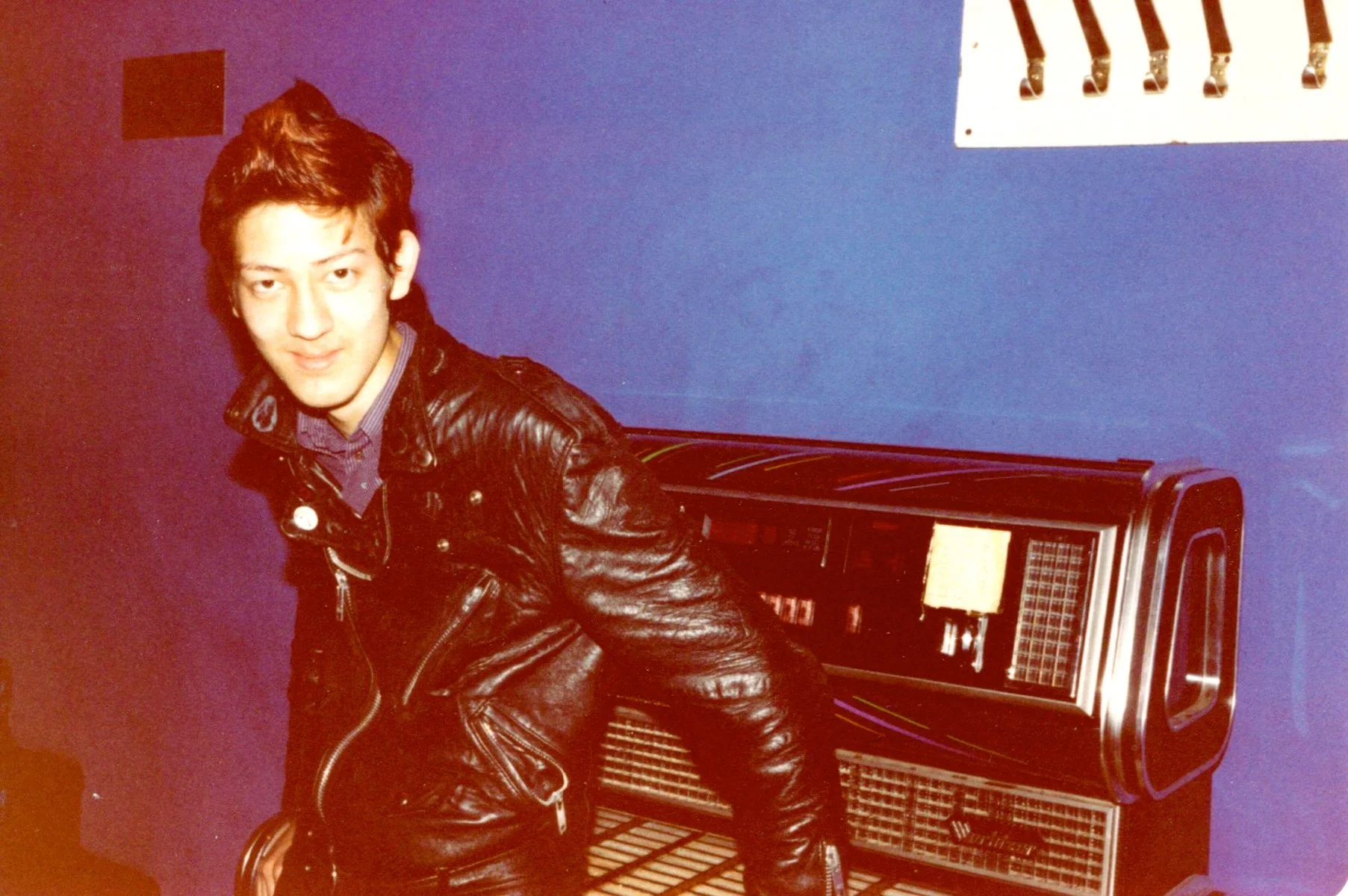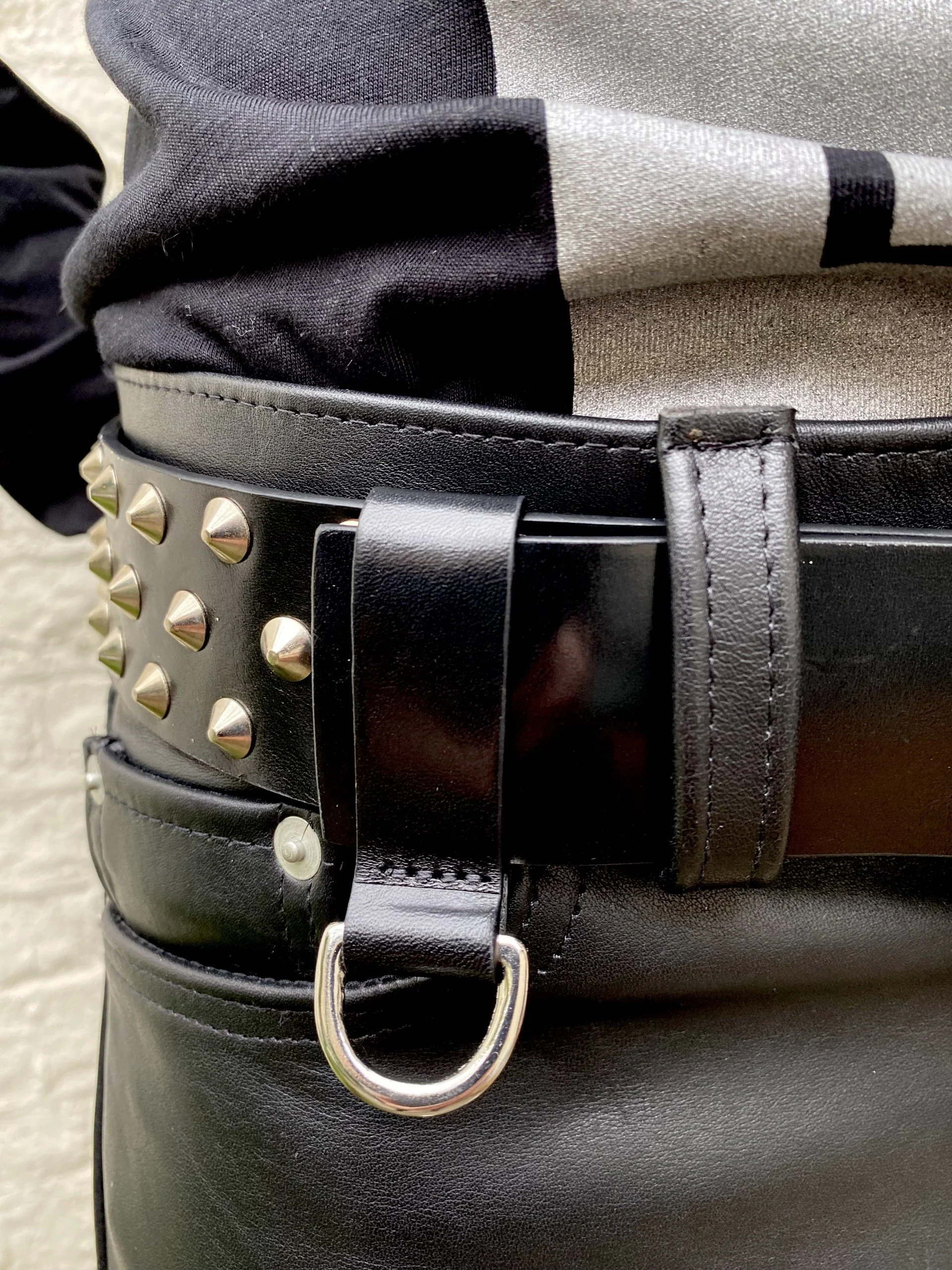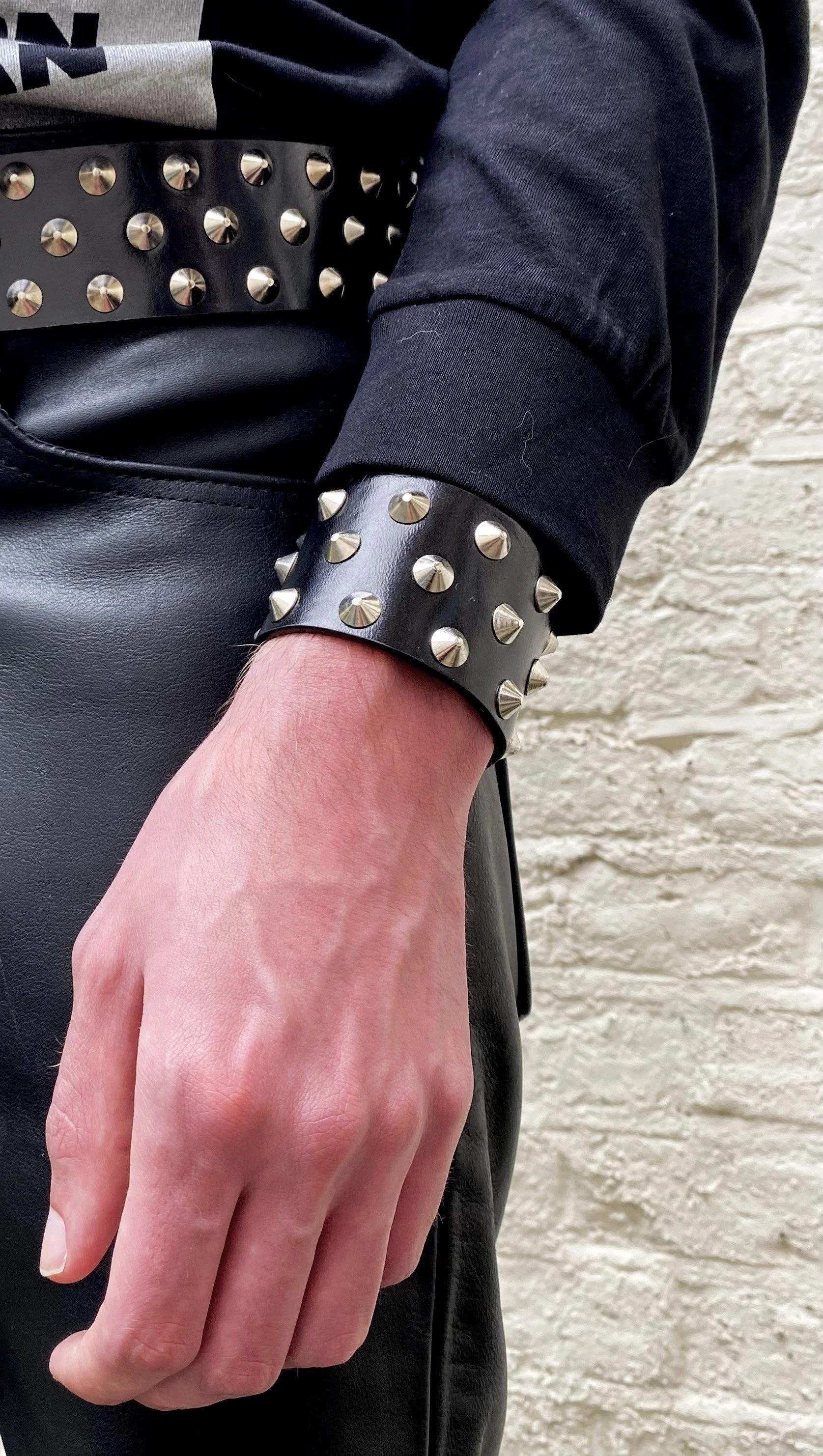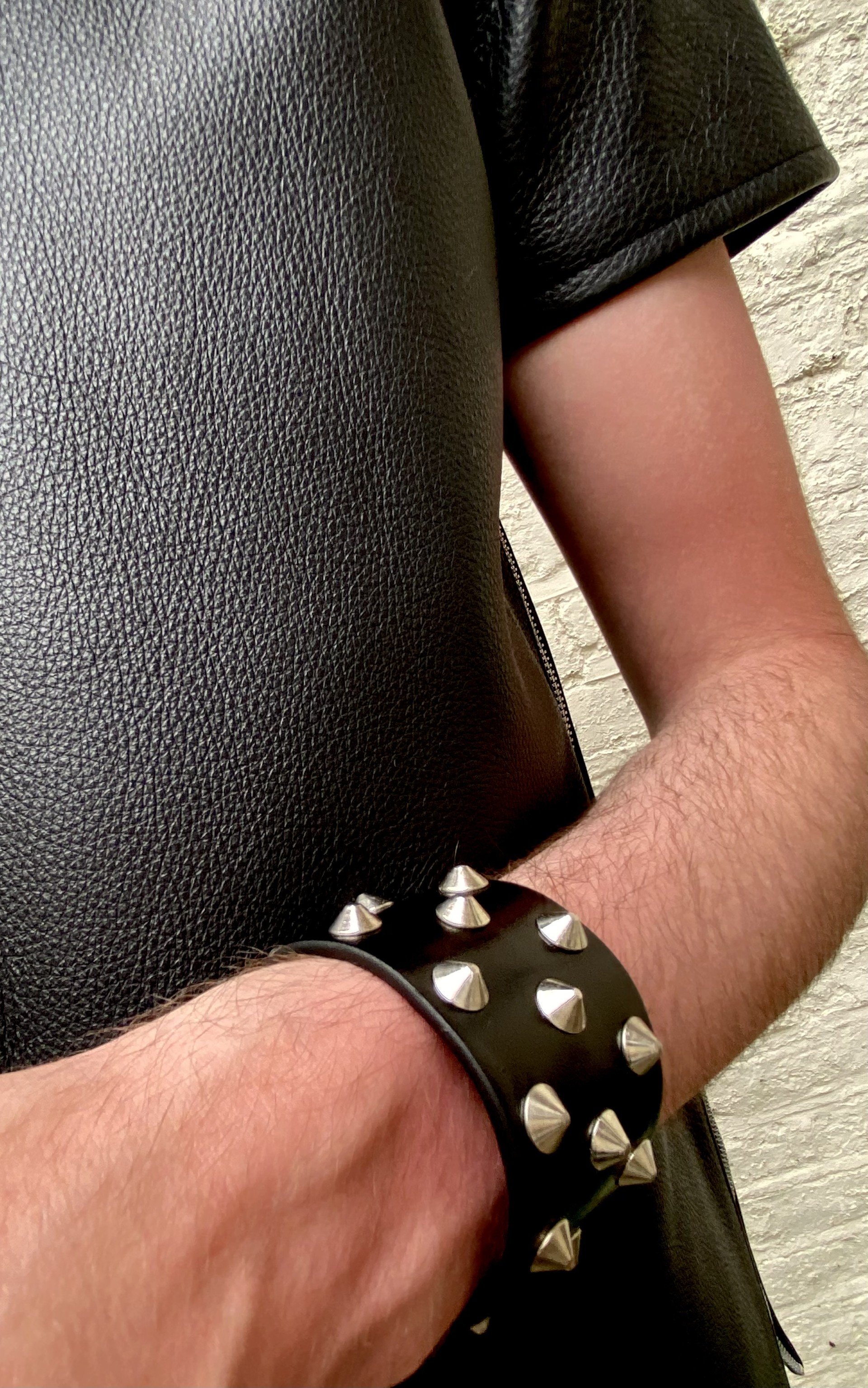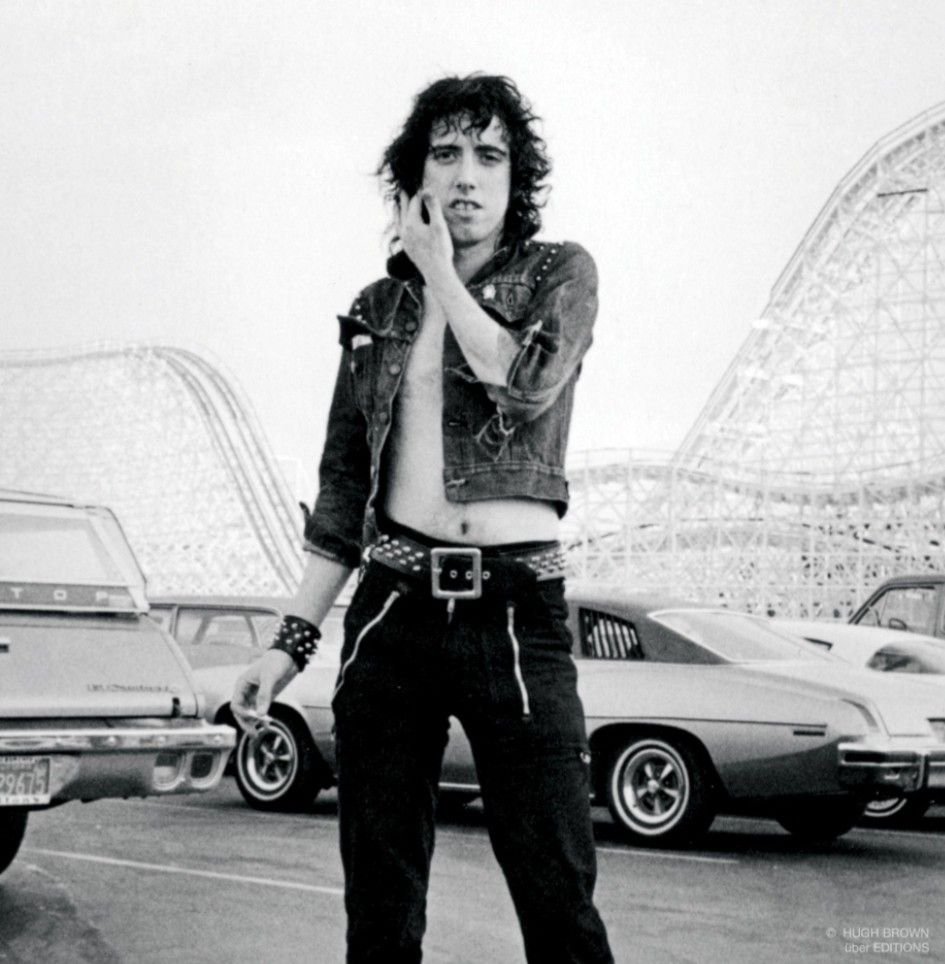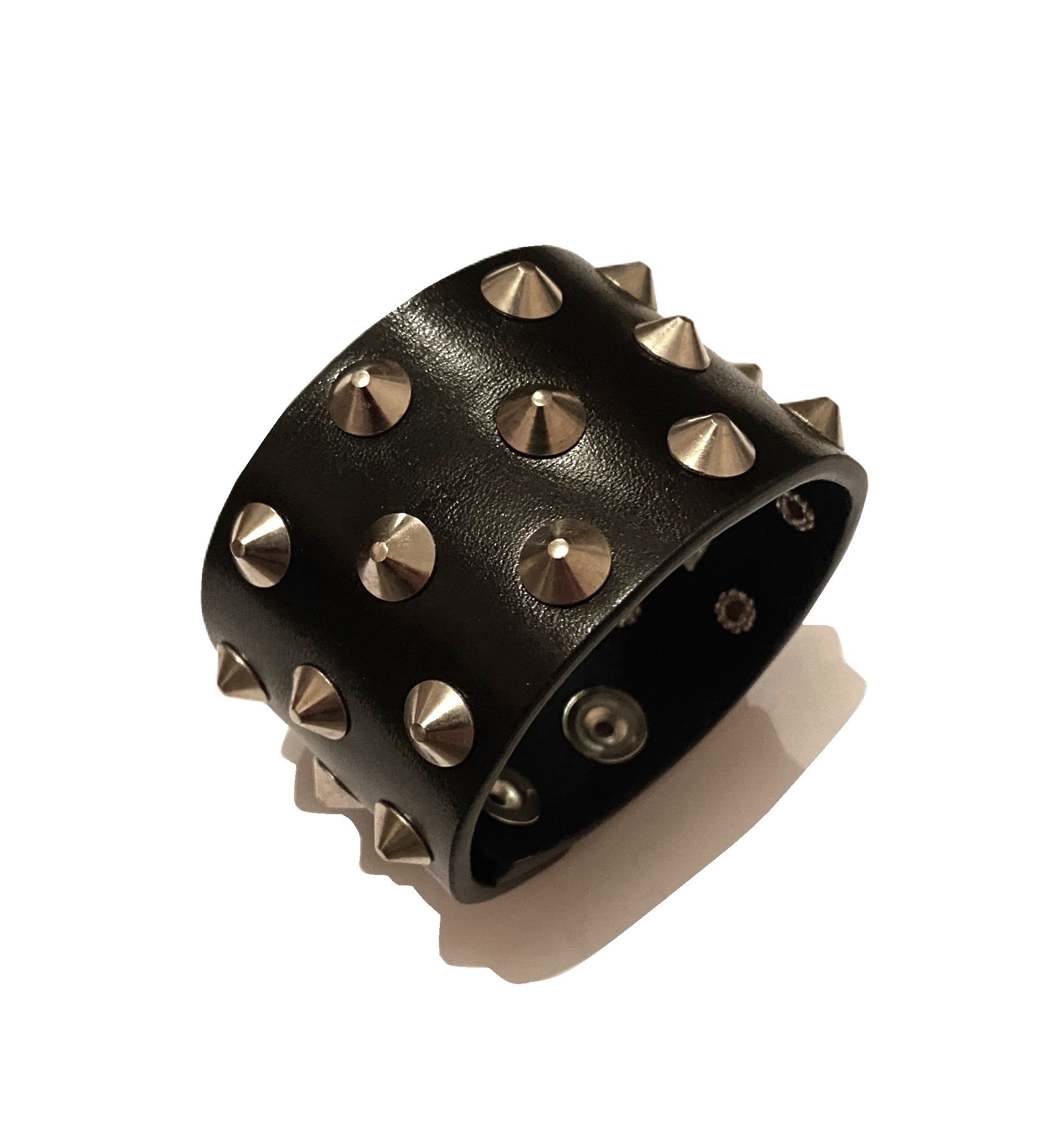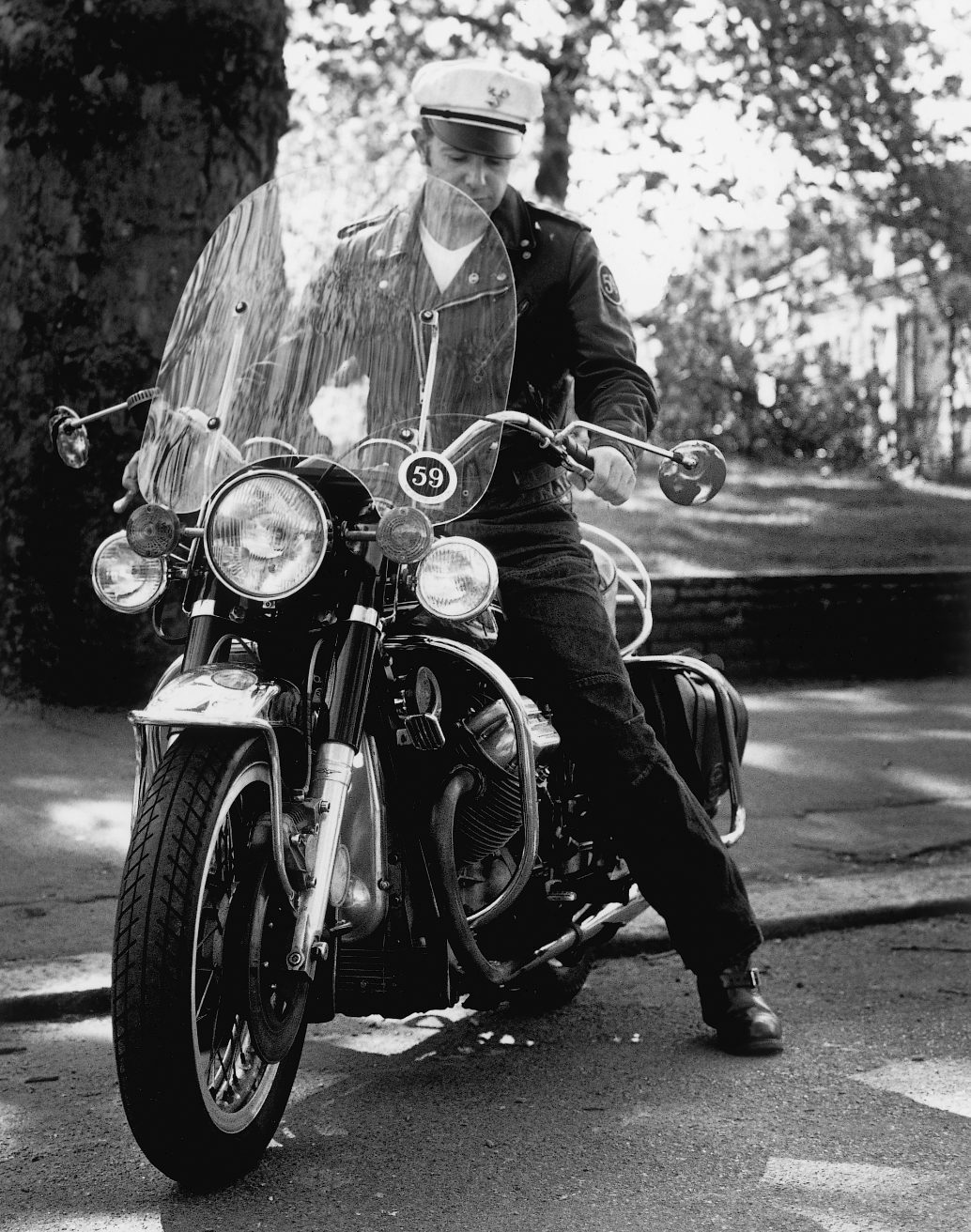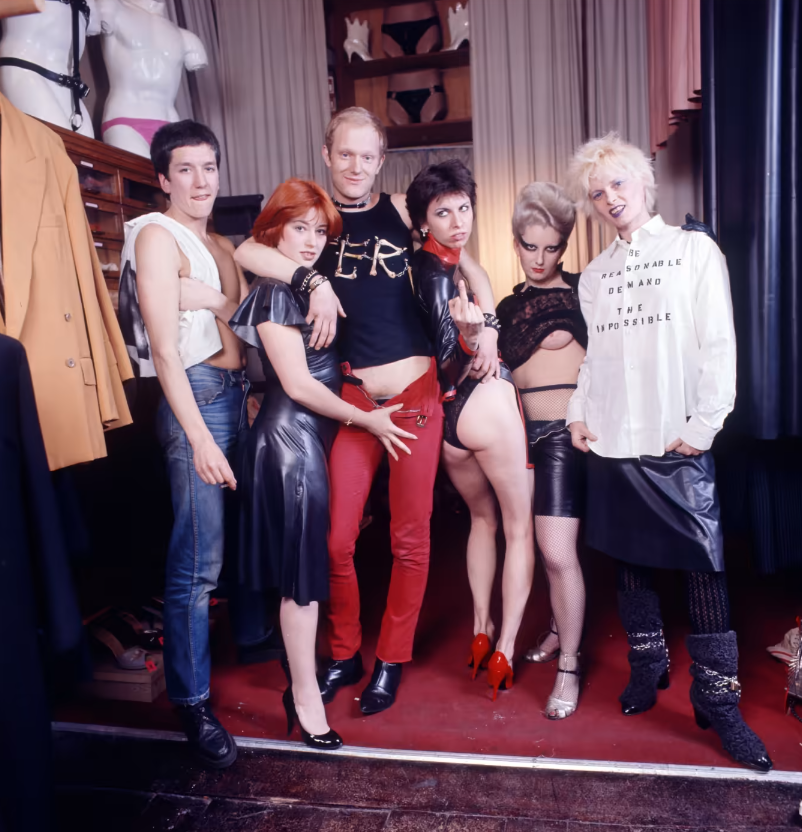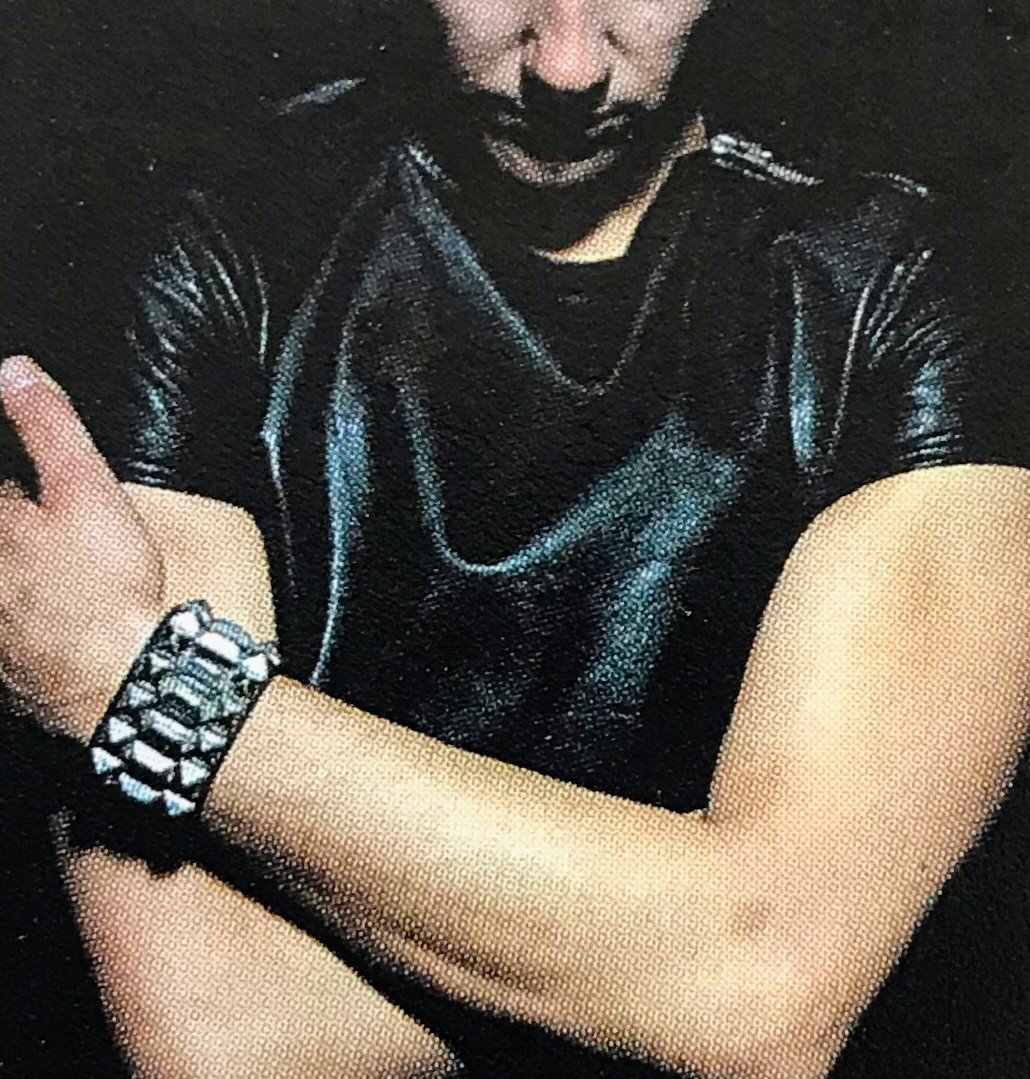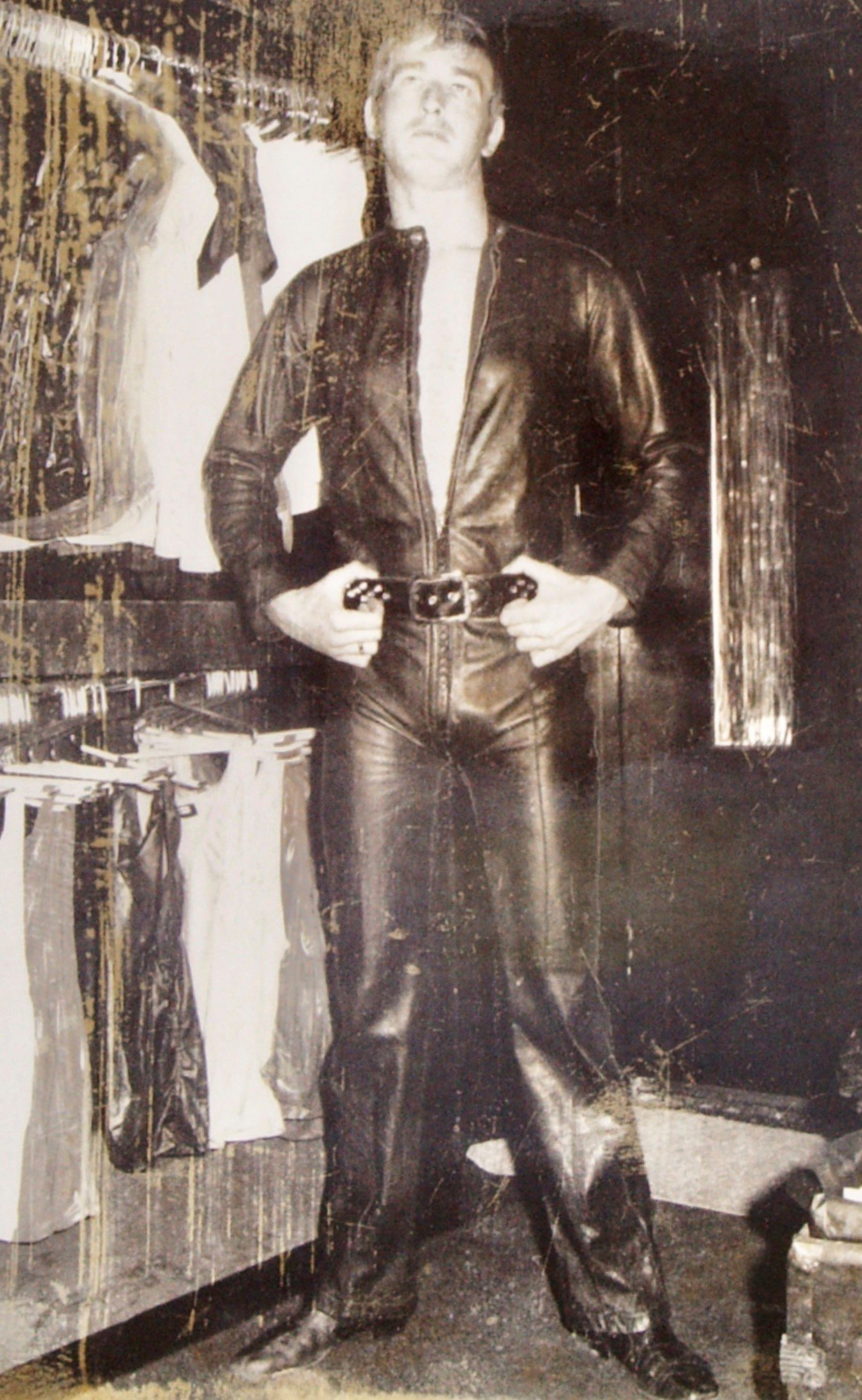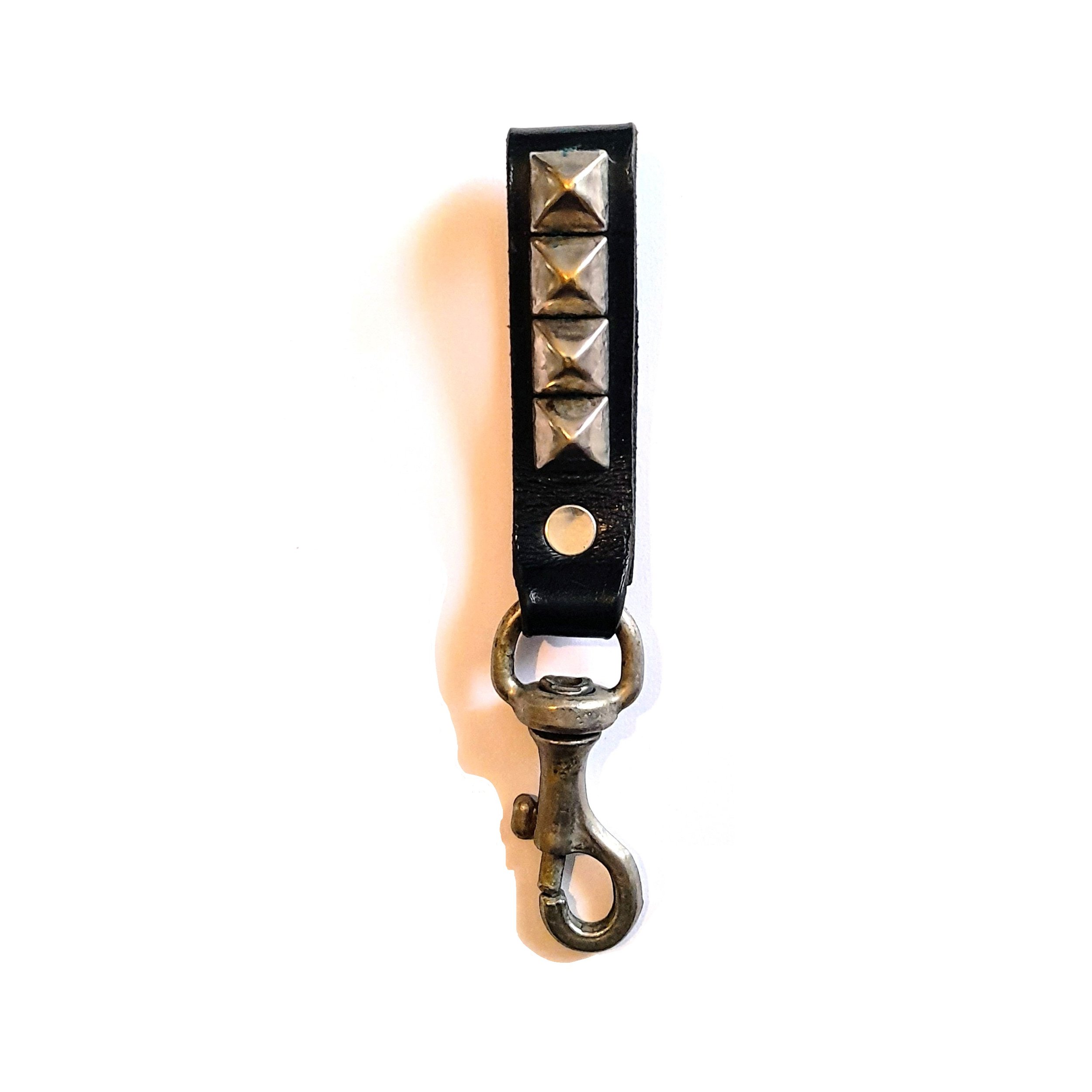Dance music producer Mark Moore was one of the first super star DJ’s to come out of the post punk movement and having been a teenage punk rocker lead to him having his finger on the pulse when it came to the early 1980s club scene. A proper London face he’s had great success with his band S’Express whose hits epitomise the early acid house genre.
Questions by Dave Carroll
Edited by Bridget Veal
DJ Mark Moore. Photo by Rob Milton.
Q. Mark, for this Q&A I thought we’d discuss scenes we know each other from, starting with the Music Machine in Camden Town circa 1978, where nearly every second person in the club wore a studded belt or wristband cuff. What was your go to outfit, complete with accessories to wear to the Music Machine?
A. Definitely my leather jacket. I was broke most of the time so my clothes were from charity shops and the Army Surplus store (was that Laurence Corner?). White shirts dyed pink, trousers that were flares converted into drainpipes, T-shirts from 5th Column who did those amazing screen prints of Siouxsie & The Banshees, The Clash and Patti Smith (I still have those!). Lots of badges from Better Badges in Portobello. You’d earn a bit of cash there putting the pins in the badges and get some free ones as well. I think I had some bondage trousers from Beaufort Market that were a bit ropey! I didn’t get anything decent until Sid and Nancy gave me a pair of black Seditionaries bondage trousers which I still have.
Mark Moore wearing his vintage leather jacket styled with a parachute shirt.
Q. For anyone that hasn’t heard it, can you tell your fantastic Sid & Nancy story?
A. People at school would say 'Sid Vicious lives near me,’ or ‘Johnny Rotten lives round corner from me,’ so me and my mate Lance or my brother, would go round and knock on their door. We went to see Sid in Maida Vale and Nancy Spungen opened the door. She thought we were cute and invited us in. Sid was adorable, really docile and like a sleepy puppy and Nancy was just the kindest person who made us feel welcome. I’m one of the few people who actually has something nice to say about Nancy!
Nancy got out her collection of cock rings to show us. How else do you entertain two 14 year old kids? She told us who they all originally belonged to and pulled out a ginormous one saying, ‘This one belonged to Johnny Thunders.’ Then she pulled out the tiniest one in the collection, ‘And here’s Sid’s.’
When we left she said, ‘Sid they’re real fans, we have to give them something!’ We came away with Seditionaries bondage trousers and T-shirts. Things that we could only dream about owning at the time. We left talking about how nice they were and how they must have had a late night as they seemed really sleepy. We were so naive, had no idea until months later that they were probably on heroin. They just seemed normal to us.
Hanging out in John Lydon’s house in Gunter Grove, Kings Road is another story for another time. Sid was great but meeting Lydon properly was brilliant. It was obvious you were meeting the brains behind the (Sex) Pistols even at that early age and I found that even more exciting.
Q. We saw each other every Friday night for about five years at the Mud Club, I distinctly remember you DJ-ing wearing a La Rocka! cut off jacket, black jeans, studded belt, black flat-top haircut. What would you say is the best record (or records) with a reference to leather?
A. How do you remember this stuff? Mind blown. I’d go for Amanda Lear’s Enigma (Give A Bit Of Mmh To Me). There’s no reference to leather in the song but she’s wearing leather and brandishing a whip in the video. I was exposed to Miss Lear and and a world of leather, amongst other things, when I went to my first gay club, Heaven in Charring Cross shortly after it opened in 1979. They were playing Amanda Lear upstairs on the video screens and I was besotted. I’ve since looked on YouTube for it and can’t find it so perhaps I imagined it!
But I guess you want something bit more punky? Oh let’s see… what comes to mind? Off the top of my head Cherry Vanilla ‘The Punk’ or Pete Burns and Nightmares On Wax ‘Black Leather’.
Q. The Cage Record Store, early 80s in the Great Gear Market, Kings Road, you were always there with Tasty Tim. Frisco Leathers was nearby and stocked The London Leatherman items. Did you get your studded belt from Frisco Leathers, if no, where did you get it?
A. The Great Gear Market, I would go and hang out with Tim who worked at The Cage there which was Rusty Egan’s record shop.
Tasty was talking about Frisco Leathers recently and how all the shops in the Great Gear Market were open plan. But Frisco Leathers was enclosed behind makeshift walls like you were entering a sex shop or a back room in a gay club. Very intimidating and you had to pluck up courage to go inside. Once inside the guys that worked there were clad in leather looking like they stepped out of a Tom of Finland picture. Again very intimidating until they started speaking and they were the campest queens ever talking in Polari all the time. Really lovely guys.
The studded belts I had were probably from Kensington Market in the basement which was a lot less intimidating to shop at. John Halliday aka Black Beauty and Fabulous Frankie worked there and could often be seen putting the studs in the belts.
To be honest I can’t remember where I got them from. I think they were often gifted to me by kind friends as they were very expensive to buy new. It was easier to get second hand ones as they were cheaper and worn in. You didn’t want them looking brand new back then. You wanted them to look like you had them for years while you were riding your imaginary motorbike around town.
Q. Heaven Nightclub. For punky teenagers like us it was a very important club starting with Cha Cha’s in the back bar on a Tuesday night and when the doors opened to the main club at midnight it was a proper eye opener. Heaven plays an important role in the history of The London Leatherman, what was it like for you the first time you went to Heaven (Nightclub)?
A. Like I said the first time I went it was a real Amanda Lear moment. I was very nervous that time going to my first full on gay night, not knowing what to expect. I was surprised at how nice everyone was. I know cynical people will be thinking that a bunch of older guys being nice to a teenager going there, for the first time, might be a bit suspect. Fresh blood! But the truth is they weren’t being predatory. There’s always been this stereotyping that all older gay men are predatory. But everyone I met that night were just being very protective and coming from a place of empathy. They wanted me to feel as comfortable and as unthreatened as possible. Looking back I’m really impressed by that. Also, I never thought I would be DJing there on the main floor of Asylum and Pyramid three years later!
A bit later, Colin Favor and Kevin Millins, who put on post-punk gigs around London under the name of Vinyl Solution (Joy Division, Wire, Cabaret Voltaire and loads more) started doing gigs at Heaven. So I also saw bands like Throbbing Gristle, Bauhaus and New Order play there. I’m sure you must have been there too.
Q. Taking LSD (me anyway!) and watching films all night at the Scala, mid-80s. What would you say are the top three leather looks in film?
A. The leather chauffeurs outfit in Entertaining Mr Sloane (1970), the bikers in Kenneth Anger’s Scorpio Rising (1963), Maggie Cheung in a black leather catsuit in Irma Vep (1996)
Mark Moore by the juke box at The Scala.
Q. Philip Sallon’s Opera House club night mid-80s where you were a resident DJ. Would you say being a teenage punk rocker influenced your DJ style? If so, how?
A. For sure! In the early days I started DJing at The Mud in The Subway Club (Leicester Square) with Tasty Tim. Our style was a cross between getting people to dance and a bit of performance art. We would intermittently try to annoy the crowd by playing something like Demis Roussos. Everyone would stamp their feet in unison so the needle would jump across the record and start playing the label. They'd be charged up and screaming with delight at that point and then we’d put on the Sex Pistols and the crowd would go bonkers tearing the lights down and smashing up the club. Philip Sallon banned us from playing the Pistols after that.
I was attracted to a lot of the electronic stuff that came through punk. Things like Cabaret Voltaire, early Human League, Throbbing Gristle. That electronic path got me into Kraftwerk and then the electro stuff that was coming from the hip-hop scene. Also the Italo and Hi-NRG stuff which was influenced by New Wave tracks like Depeche Mode.
Then of course me and Colin Favor started playing Chicago House, Detroit Techno and Acid from 1985 onwards at Pyramid Heaven. Our alternative gay crowd loved it! I also played it at The Mud (Club) and The Opera House. Initially, because it was a straighter crowd at the Mud by then, and the floor would often clear as they weren’t used to the crazier sounds of Acid House. But my punk DNA meant I would keep playing it anyway rather than say, ‘Well I won’t play that again.’ I knew those records were great. After a couple of weeks those tracks that cleared the floor would start getting them running onto the floor. They became anthems, things like Strings Of Life, Sleezy D’s I’ve Lost Control, Phuture’s Acid Tracks. Stay true to what you believe even if you’re the only one believing it at the time.
Q. Who was your favourite leather wearing punk rock idol?
A. The Ramones! And dare I say it, Billy Idol. That video of him in a jock strap and suspenders, beyond!
